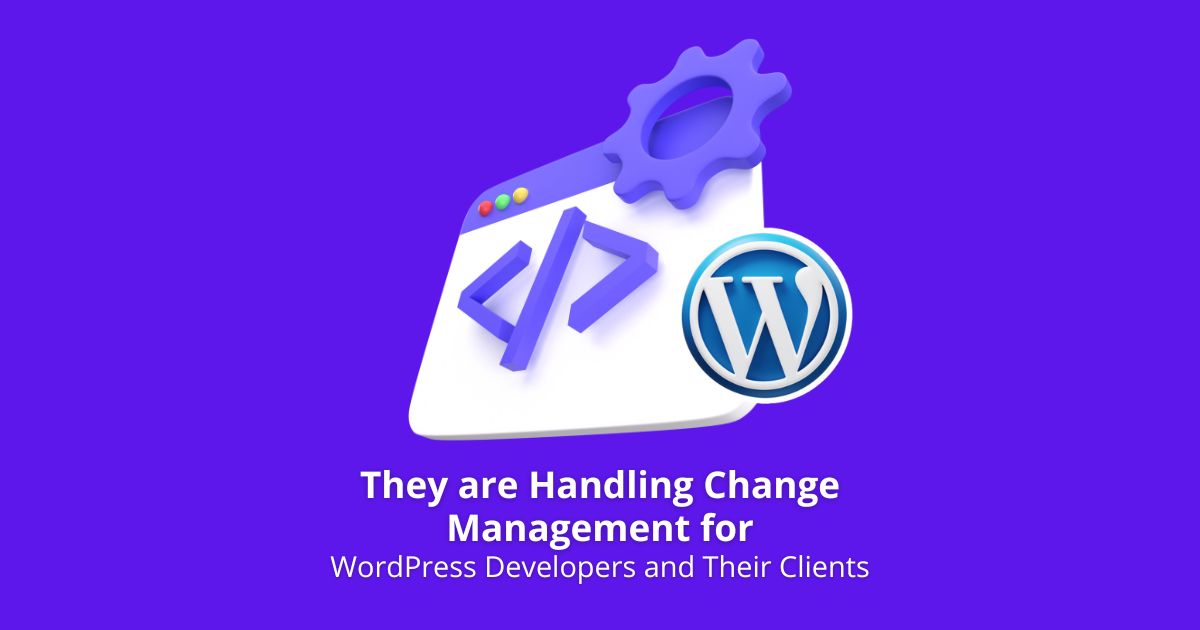It’s difficult enough handling constant changes in the workplace nowadays, whatever your role in any given environment. From shifting cultural norms such as being careful not to misgender colleagues, navigating workplace relationships can be like walking on eggshells. Perhaps more importantly, handling organizational change management in terms of digital adoption and issues highlighted by the post-pandemic work from home (WFH) culture can also be hard work.

Now throw into the mix the fact that you might be a freelancer with demanding clients or a full-time employed WordPress (WP) developer, and you have the constant changes in terms of plugins, widgets and all manner of security fixes to update on a daily basis. So, as WP professionals, how do we deal with staying ahead of the ever-evolving development tools and personal techniques essential for career success?
Here are some strategies you might want to think about when researching change management models:
Build a Strong Support Network.
Building a strong support network can take time to achieve. Obviously, if you’re a freelancer using your own devices to access developer forums, that’s fine. But you might find yourself in hot water with your boss if you use a work computer or a VPN (especially one of those free, popular VPN extensions) from your company laptop to access community sites, due to obvious data security concerns.
By sharing your hassles with other developers who have faced the same challenges, you can collaborate on finding solutions and gain valuable insights. Not least, networking on sites like LinkedIn can also present opportunities for mentorship and collaboration.
Keep informed and learn continually.
To stay informed about best practice and latest WP advancements, you might also think about subscribing to blogs such as web development communities or following industry influencers on social media. For example the SEO space continuously changes as Google releases a core update every so often, you should utilize SEO extensions to analyze how your competitors are doing and continuously upgrading your skill set. The above will give you a competitive edge and make adapting to change more manageable.
Keep the client’s change requirements at the forefront of your mind.
Always remember that it’s the client who pays your wages – whether that client might be a customer of your employer or a direct client of yourself as a freelancer. So if the customer needs to change their website for reasons that don’t make technical sense, it could be that they are being forced to change by digital adoption strategies imposed upon them, which you might not know about.
In short, if your boss or client wants changes that don’t make any sense – don’t argue, just get the required tasks from them firmly written via email in case things go wrong. Then, do as you’re asked and take the money!
Embrace a positive mindset.
Some people see stepping-stones where others see stumbling blocks. So cultivating a positive outlook is crucial for dealing with change.
There’s a phrase that salespeople use: “Every problem is actually an opportunity.” But there’s an old joke in management circles about such positive attitudes, which has a serious side and reminds us that some problems really do need expert outside help:
A young guy goes to his boss and says: “Hey, I’m really sorry to bother you with this, but I’ve been late for work a lot lately and I confess I can’t cope with the job these last few months – can I discuss a few problems I need to address?”
The boss replies: “Don’t worry, Brad! We don’t have problems here at Acme, only opportunities!”
“That’s great!” replies Brad, “because I want to talk about my ongoing drinking opportunity…”
Test and experiment.
When faced with technical change, as opposed to the organisational type, testing new techniques in conjunction with business intelligence platforms like Google Analytics can really help. Also, using sandboxes and child themes before getting stuck into a task ‘for real’ can often be a productive strategy. It’s time-consuming, so it’s important to balance this with your clients’ timetables.
Accept feedback and don’t take criticism personally.
Many developers are also creative types, and such people (copywriters especially!) find it difficult to accept constructive criticism; but it can help you to grow your skills and identify areas for improvement. When a client says that they don’t like the drop-down menu looking like it is, or the logo ‘is a bit too far to the right’ – don’t throw your keyboard and trackpad out of your pram. The client may have a point. Even if they’re wrong – smile and compromise.
Draw up a personal development plan.
Conduct a personal skills audit, then identify areas for improvement. Set yourself clear and achievable goals for growth. Break down these goals using sensible milestones, always considering a work life balance. A WP developer burned out from an 80-hour week is no use to anyone.
Set a timeline for achieving milestones using a proprietary planning platform; try Gantt chart software, for example. Staying aligned with your professional development is one of the best ways to cope with change both philosophically and technically.
Don’t be an imposter to yourself.
In conclusion, as a WP professional, as in any career, embracing change management is vital to stay competitive and relevant in your chosen field. But don’t let things like ‘impostor syndrome’ or constantly comparing yourself to others get in your way. So what if you work best at 2 am as a freelancer? Does it suit your lifestyle?
There’s an old Jazz song by Everett Robbins and Porter Grainger, both 1920s Mississippi Bluesmen, which goes:
“I never go to church on Sunday /
And I shim-sham-shimmy ‘round all day on Monday/
And it ain’t nobody’s business if I do…”
Above all, when it comes to change management, it’s up to you to ensure that your strategies achieve the most important goal in life: happiness.